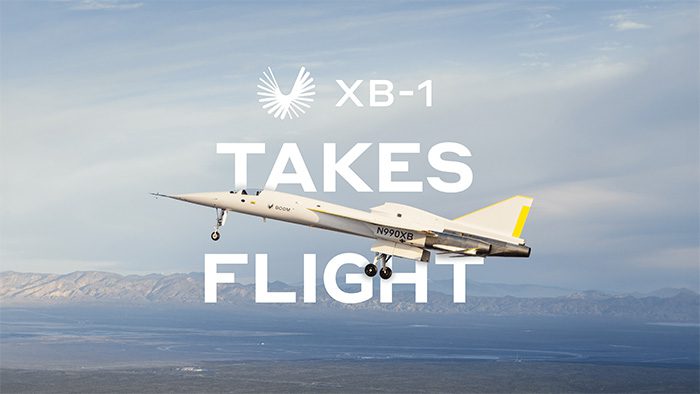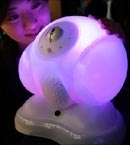The XB-1 prototype of the supersonic passenger aircraft Overture has successfully met all testing objectives, including reaching an altitude of 2,170 meters and a speed of 440 km/h.
The XB-1 aircraft takes off. (Video: Boom Supersonic)
Boom Supersonic, a U.S.-based aviation startup, is developing the Overture supersonic aircraft, designed to travel significantly faster than current large passenger planes, while being optimized to run on 100% sustainable aviation fuel. Overture is projected to carry 64 to 80 passengers at a speed of Mach 1.7 (approximately 2,100 km/h).
Boom Supersonic initiated the XB-1 aircraft program to provide a foundation for the design and development of Overture. On March 22, the startup announced that the XB-1 demonstrator successfully completed its test flight at Mojave Air and Space Port in Mojave, California. XB-1 achieved all its testing objectives, including safely reaching an altitude of 2,170 meters and a maximum speed of 440 km/h.
The XB-1 is equipped with three General Electric J85 engines capable of producing a maximum thrust of 54.7 kilonewtons (kN). The aircraft has a length of 21.6 meters and is constructed from carbon fiber and titanium composite materials. It was primarily developed in Centennial, Colorado, before being moved to Mojave Air and Space Port in early 2023, where experts conducted thorough testing.

The aircraft has excellent runway visibility with two cameras mounted on the nose.
According to Boom Supersonic, the XB-1 showcases advanced and critical technologies for supersonic flight. The aircraft features excellent runway visibility with two cameras mounted on the nose, providing information about the flight path and altitude on a high-resolution pilot display. This technology enhances aerodynamic efficiency without the need for a cumbersome and complex movable nose.
Engineers have also explored thousands of feasible designs for the XB-1 using fluid dynamics simulations. Consequently, the design has been adjusted to combine supersonic flight efficiency with safety and stability during takeoff and landing. The XB-1 is primarily made from carbon fiber composite materials, achieving an advanced aerodynamic design within a structure that is both strong and lightweight.
As the XB-1 demonstrator completes its first flight, Overture also moves closer to production. The project has already received 130 orders and pre-orders from major airlines, including American Airlines, United Airlines, and Japan Airlines.




















































